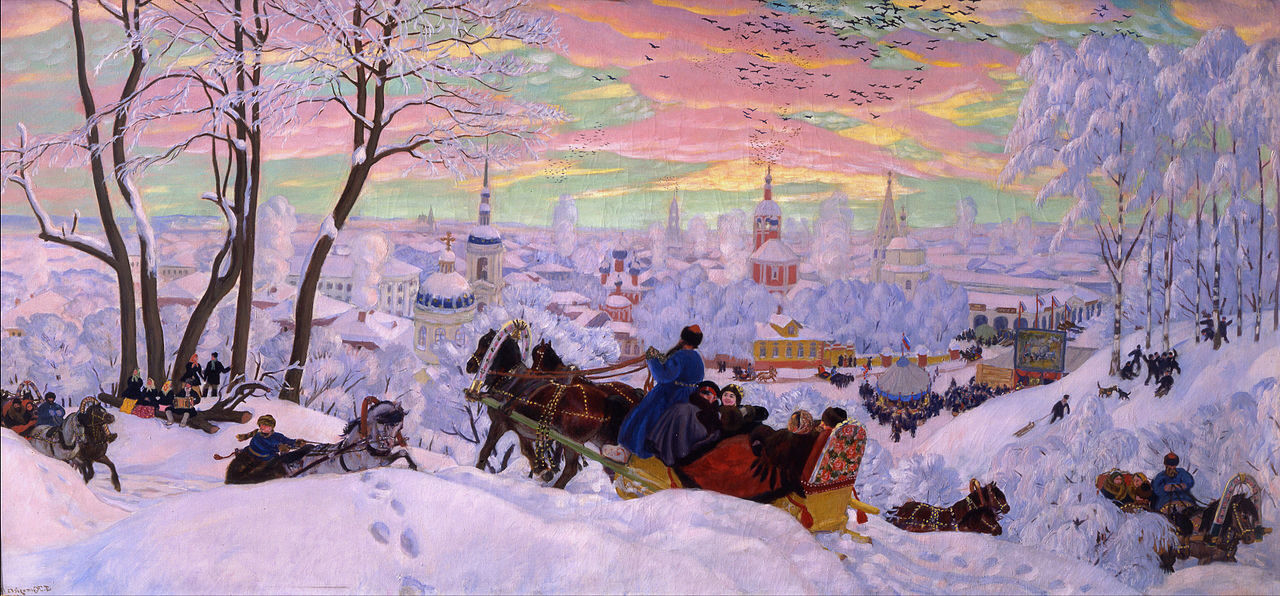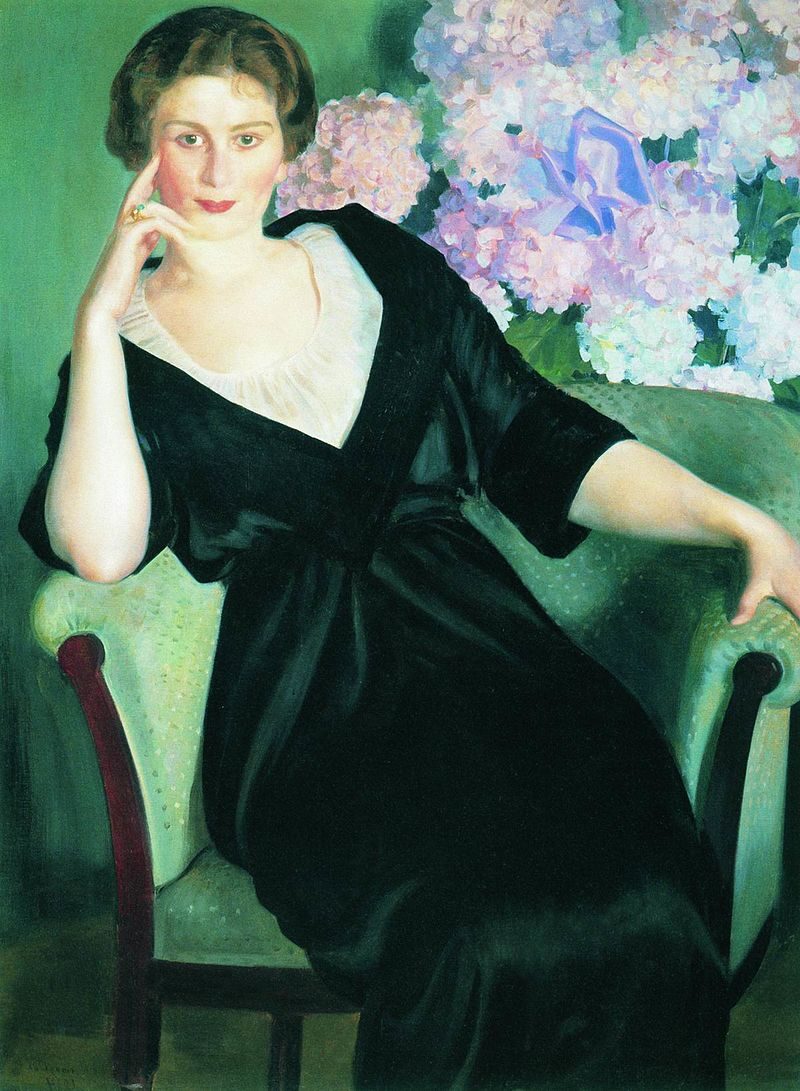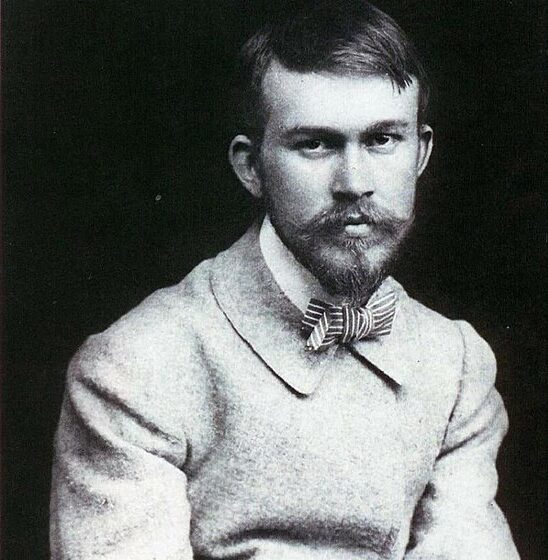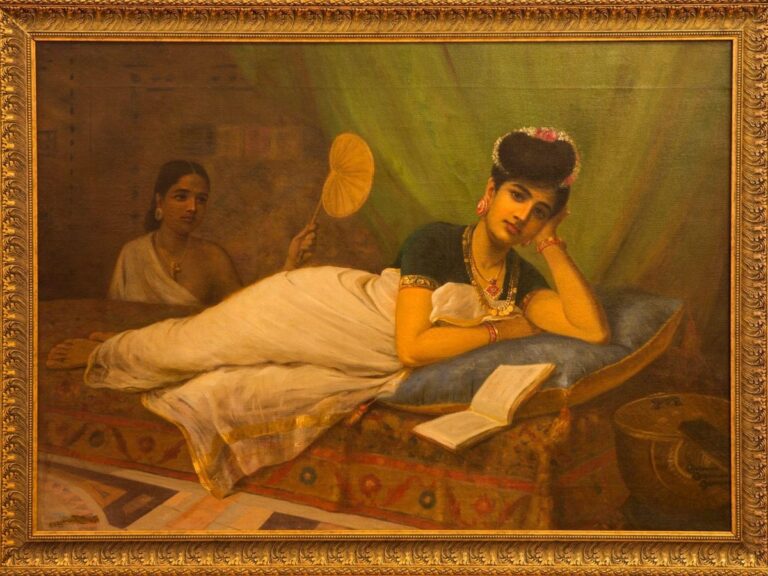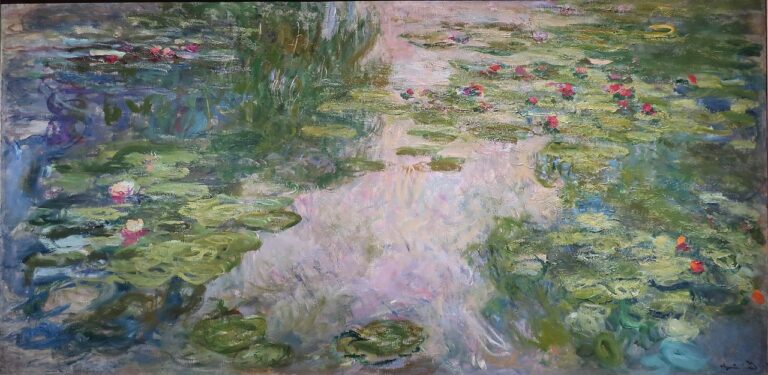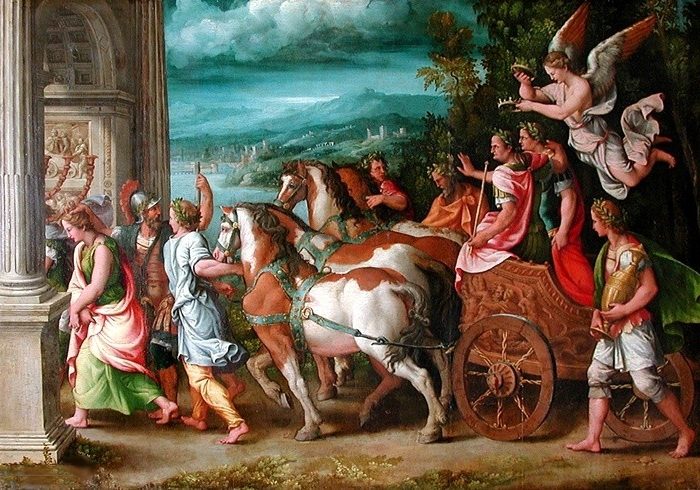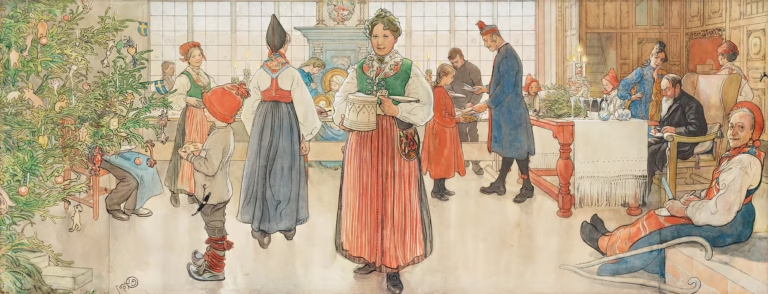Boris Kustodiev: Painter of Russian Folk Life and Cultural Tradition
Born: 7 March 1878, Astrakhan, Russian Empire
Death: 28 May 1927, Leningrad, Soviet Union
Art Movement: Realism, Art Nouveau
Nationality: Russian
Teachers: Pavel Vlasov, Dmitry Stelletsky, and Ilya Repin
Institution: Imperial Academy of Arts, St. Petersburg
Boris Kustodiev: Painter of Russian Folk Life and Cultural Tradition
Life and Education of Boris Kustodiev
Boris Mikhailovich Kustodiev’s journey from a small Volga town to becoming one of Russia’s most celebrated painters was shaped by his early environment and formal artistic training.
His distinctive style emerged from a combination of traditional academic education and his deep connection to Russian folk culture.
Early Life in Astrakhan
Boris Kustodiev was born in Astrakhan on March 7, 1878, into an educated family. His father, a professor who taught philosophy, history of literature, and logic at the local theological seminary, died when Boris was only two years old.
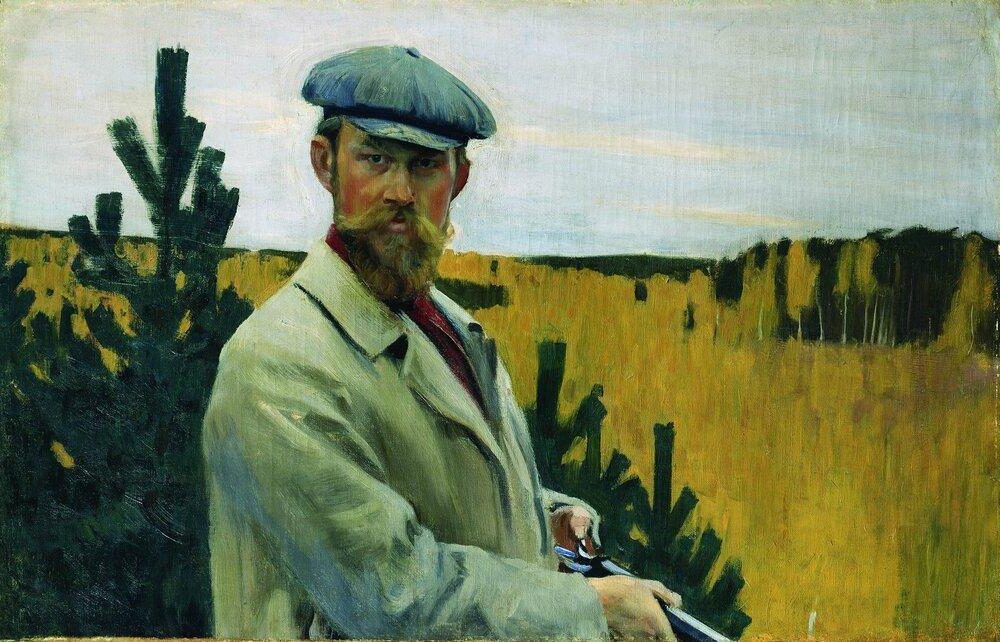
Self-portrait, 1905, by Boris Kustodiev
After his father’s death, his mother Ekaterina Prokhorovna took responsibility for raising him. Despite financial challenges, she supported his early interest in art.
Young Boris was initially enrolled in the Astrakhan Theological Seminary following family tradition. However, his artistic talents were evident from an early age.
The bustling riverside city of Astrakhan, with its colorful markets and diverse population, made a lasting impression on Kustodiev. These vibrant scenes of everyday Russian life would later become central themes in his artwork.
Studying Under Ilya Repin
In 1896, Kustodiev moved to Saint Petersburg to pursue formal art education at the Imperial Academy of Arts. His exceptional talent caught the attention of Ilya Repin, Russia’s most influential painter at that time.
Repin invited the young artist to join his studio, a significant honor that shaped Kustodiev’s early career.
Under Repin’s guidance, Kustodiev developed his technical skills while painting extensively from nature.
In Repin’s studio, he learned to capture the colorful diversity of the world around him. This training helped him develop his distinctive ability to portray vivid, lively scenes of Russian life.
Kustodiev assisted Repin with his monumental painting “Ceremonial Meeting of the State Council,” creating portraits of several council members for this important work.
Academic Pursuits at the Imperial Academy of Arts
At the Imperial Academy, Kustodiev received a comprehensive education in the traditions of Russian and European art. He was recognized as an exceptional student, winning several academic awards.
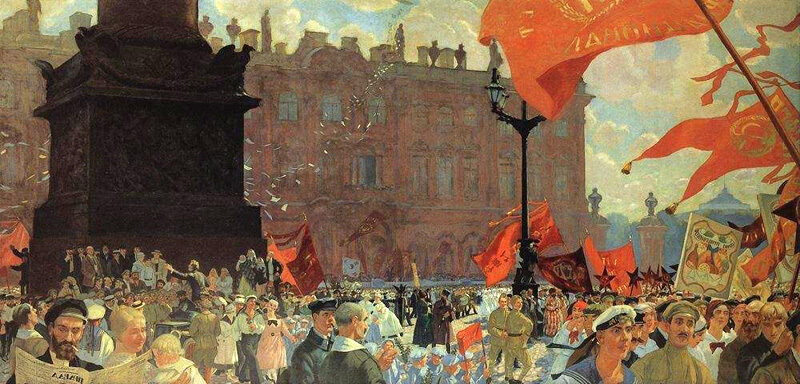
Festival of the II Congress of Comintern, 1921, by Boris Kustodiev
His academic work demonstrated technical excellence while showing early signs of his unique artistic voice.
He graduated from the Academy in 1903 with a gold medal, which earned him a scholarship for international travel.
Kustodiev used this opportunity to visit France, Spain, and Italy, expanding his artistic horizons. These travels exposed him to Western European art movements but ultimately strengthened his connection to Russian themes.
Upon returning to Russia, he joined the “World of Art” movement, which sought to combine traditional Russian aesthetics with modern artistic approaches. This association helped define his artistic direction in the early 20th century.
Artistic Career and Signature Works
Boris Kustodiev established himself as one of Russia’s most distinctive painters through his vibrant depictions of traditional Russian life and his versatile work across various artistic mediums. His colorful scenes captured the essence of Russian culture during a transformative period in the country’s history.
Exploration of Russian Lifestyle in Painting
Kustodiev’s paintings celebrated Russian provincial life with extraordinary vibrancy and detail. His most famous works include the “Russian Venus” series, which reimagined classical beauty through distinctly Russian imagery.
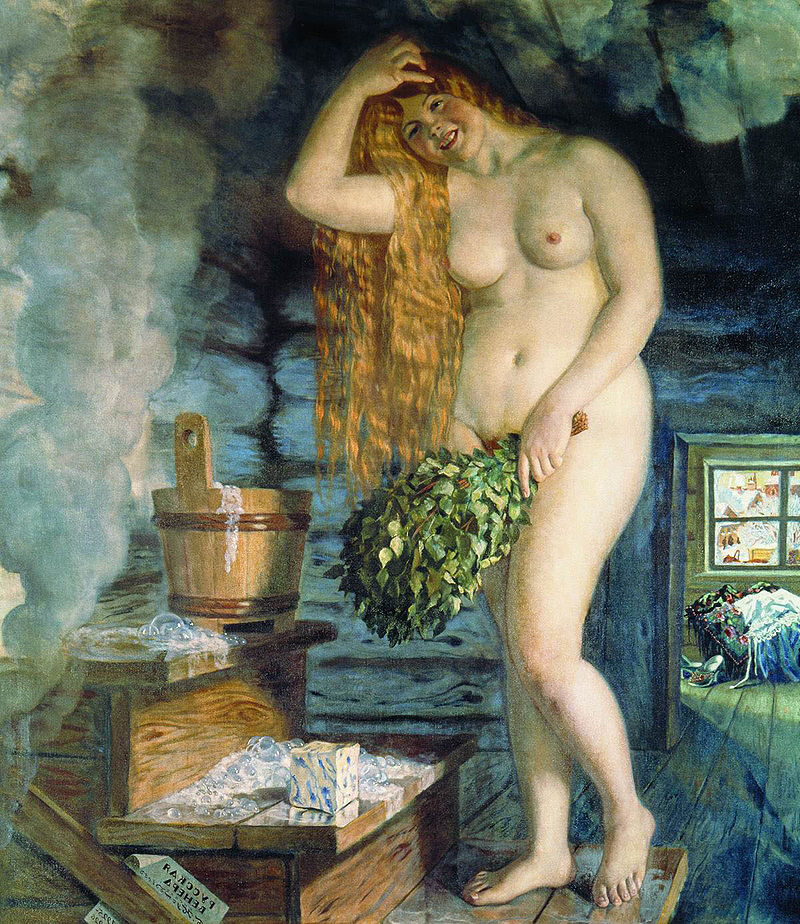
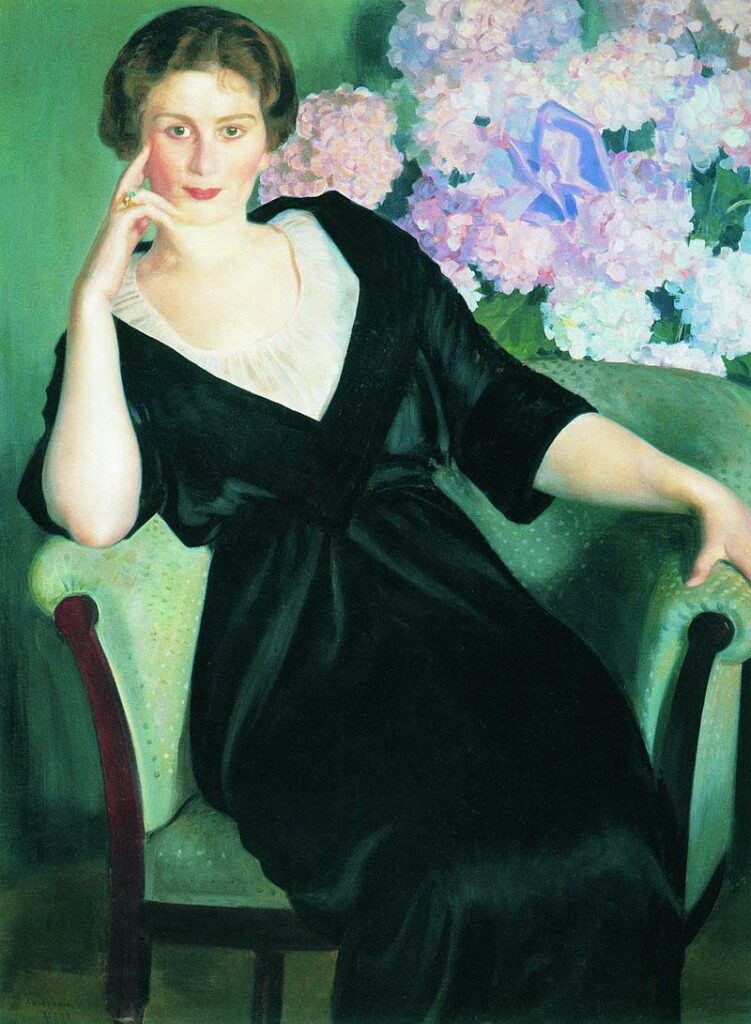
The painter gained particular recognition for his festive “Maslenitsa” (Shrovetide) paintings that depicted the traditional Pancake Tuesday celebrations.
These works featured snow-covered villages buzzing with activity, sleigh rides, and feasting crowds.
Despite suffering from a spinal disease that left him paralyzed from 1916 onward, Kustodiev continued to create his most joyful paintings from memory. His genre pieces portrayed merchants, their wives, and village scenes with rich colors and meticulous attention to cultural elements.
Illustrations for Classical Russian Literature
Kustodiev made significant contributions as a book illustrator for Russian literary classics. His illustrations for Nikolai Gogol’s “Dead Souls” captured the satirical essence of the text through expressive character designs.
He also created memorable visual interpretations for works by Mikhail Lermontov and Leo Tolstoy. These illustrations demonstrated his deep understanding of Russian literature and ability to translate narrative elements into compelling visual form.
His illustration style combined realistic portraiture with elements of folk art. This approach made complex literary themes accessible while preserving the cultural context of the stories.
Kustodiev’s book illustrations enhanced readers’ experiences by providing authentic visual representations of characters and settings from cherished Russian classics.
Achievements in Stage and Book Design
Beyond easel painting, Kustodiev excelled as a stage designer for theater productions. His set designs for Alexander Ostrovsky’s plays brought nineteenth-century Russian merchant life to vivid three-dimensional reality.
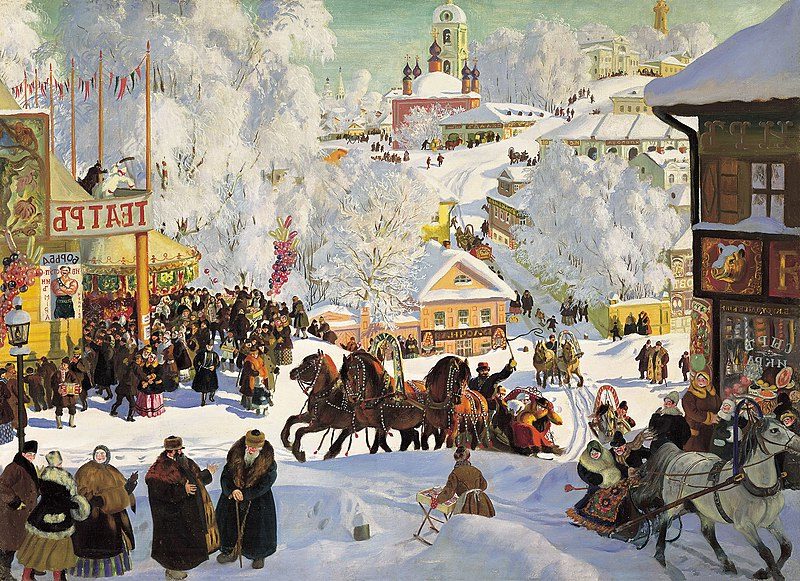
Pancake Tuesday, 1919, by Boris Kustodiev
His talent for theatrical design stemmed from his ability to create immersive visual environments that supported dramatic narratives. Kustodiev’s stage work featured the same rich color palette and attention to detail that characterized his paintings.
In book design, he approached each project holistically, creating cohesive visual experiences from cover to illustrations. His designs for children’s books were particularly admired for their accessibility and charm.
Kustodiev’s achievements in stage and book design demonstrated his versatility as an artist who could work effectively across multiple visual mediums while maintaining his distinctive artistic voice.
Legacy and Influence on Russian Art
Boris Kustodiev’s art continues to impact Russian cultural identity through his vivid portrayals of traditional life. His works capture a nostalgic vision of pre-revolutionary Russia that resonates with viewers even today.
Presence in Museums and Private Collections
Kustodiev’s works occupy prominent positions in Russia’s most prestigious art institutions. The Tretyakov Gallery in Moscow houses many of his significant paintings, making them accessible to the public. The State Russian Museum in St. Petersburg also maintains an extensive collection of his artwork, including his celebrated self-portraits and genre scenes.
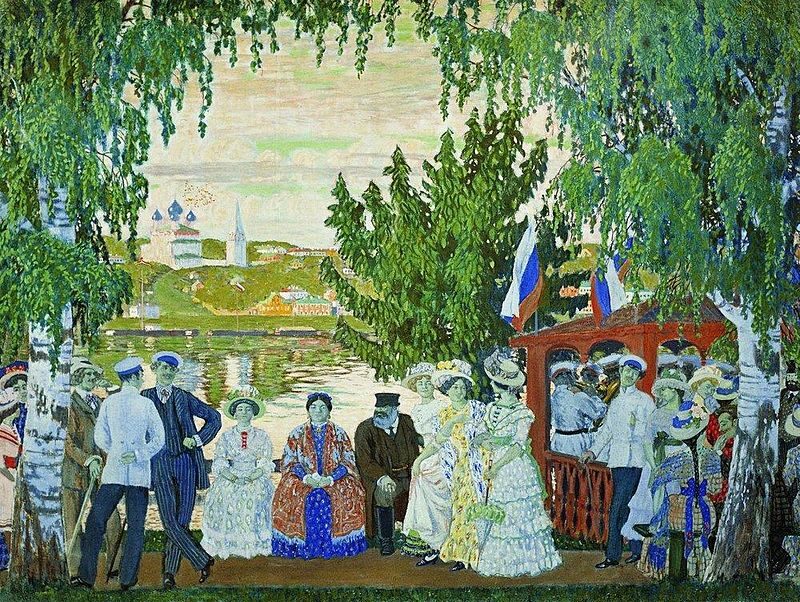
Promenade Along Volga River II, 1909, by Boris Kustodiev
Beyond major museums, regional galleries throughout Russia proudly display Kustodiev’s paintings. His works appear in important private collections both within Russia and internationally.
The preservation of his paintings in these collections has helped maintain his artistic legacy and allowed new generations to discover his distinctive style. Museum curators often highlight his works as exemplary representations of early 20th century Russian art.
Art Market and Reproductions
Kustodiev’s paintings command significant attention at major auction houses. Christie’s and other prestigious auction companies have sold his original works for substantial sums, reflecting his enduring market value.

Looking at the Volga, 1922, by Boris Kustodiev
High-quality oil painting reproductions of Kustodiev’s most famous works are popular with art collectors and enthusiasts. These museum quality reproductions allow wider appreciation of his distinctive style and vibrant color palette.
Prints featuring his colorful festival scenes and portraits regularly appear in art publications and as decorative pieces. Commercial reproductions range from affordable posters to premium limited-edition prints.
The continued demand for Kustodiev’s imagery in various formats demonstrates his lasting appeal in Russian art history and his influence on visual representations of traditional Russian culture.
Frequently Asked Questions
Boris Kustodiev’s work captures the essence of Russian culture through vibrant colors and detailed scenes of everyday life. His paintings offer insight into both Russian traditions and his personal artistic journey despite significant physical challenges.
What is the historical significance of Boris Kustodiev’s works in Russian art?
Boris Kustodiev emerged as a pivotal figure in Russian art during the early 20th century. His works bridged traditional Russian art with modernist approaches, creating a unique visual language that celebrated Russian identity.
During a time of immense social and political change, Kustodiev’s paintings preserved images of traditional Russian life. Critics initially dismissed some of his work as “illiterate splints,” but his authentic portrayals eventually gained recognition.
Kustodiev’s art became particularly significant as documentation of pre-revolutionary Russia. His colorful depictions of merchants, fairs, and festivities serve as historical records of customs and ways of life that were rapidly disappearing.
Can you name some of the most iconic paintings created by Boris Kustodiev?
“The Merchant’s Wife” (1915) stands as one of Kustodiev’s most recognized works, depicting a wealthy merchant’s wife taking tea. This painting exemplifies his skill in portraying Russian merchant class life with vivid colors.
“Shrovetide” (1916) captures the festive atmosphere of the traditional Russian carnival before Lent. The painting showcases Kustodiev’s talent for creating joyful crowd scenes filled with energy and color.
“Bolshevik” (1920) represents his shift toward politically relevant themes after the revolution. His self-portraits are also noteworthy, revealing his resilience despite physical suffering from spinal tuberculosis.
How did Boris Kustodiev’s personal life and background influence his art style?
Born in Astrakhan in 1878, Kustodiev’s provincial upbringing deeply influenced his artistic perspective. His early exposure to Russian provincial life gave him authentic material for his later works.
Kustodiev’s severe illness dramatically shaped his later career. From 1916, he was largely paralyzed and painted from memory or from his window, perhaps explaining the nostalgic quality that permeates his work.
Despite physical limitations, he maintained remarkable productivity and an optimistic vision. His art often depicted vibrant celebrations and colorful scenes, contrasting sharply with his personal suffering.
In what ways did Boris Kustodiev contribute to the portrayal of Russian culture and everyday life in his paintings?
Kustodiev excelled at capturing the essence of Russian festivities, markets, and seasonal celebrations. His paintings documented traditional customs, clothing, and architecture with both accuracy and artistic flair.
He particularly focused on merchant life and provincial towns, areas often overlooked by other notable artists of his time. His rich depictions of food, fabric, and domestic scenes preserved aspects of Russian material culture.
Kustodiev’s work features distinctly Russian types and characters, from merchants to peasants. His paintings celebrate Russian identity through detailed portrayals of ordinary people engaged in everyday activities.
What techniques and mediums did Boris Kustodiev commonly use in his artwork?
Kustodiev worked across multiple mediums including oil painting, watercolor, and graphic arts. His versatility extended to stage design, where he created memorable sets for theater productions.
His painting technique featured bold, saturated colors and deliberate composition. Kustodiev often employed slightly exaggerated proportions and stylized forms to enhance the expressive quality of his work.
He frequently used a high viewpoint in his compositions, creating panoramic scenes that conveyed the scope and energy of Russian communal life. His brushwork balanced detail with broader, more expressive strokes.
How has Boris Kustodiev’s legacy and influence persisted in modern art?
Kustodiev’s influence extends beyond Russian borders to international art communities. His distinctive style has inspired contemporary artists who seek to capture cultural identity and everyday life.
Museum exhibitions worldwide continue to feature his works. They introduce new generations to his vibrant vision of Russia. His paintings have become emblematic of a particular period in Russian cultural history.
Kustodiev’s approach to depicting national culture with both authenticity and stylistic innovation remains relevant to current discussions about cultural representation in art. His work demonstrates how artists can celebrate cultural heritage while developing a distinctive personal style.

